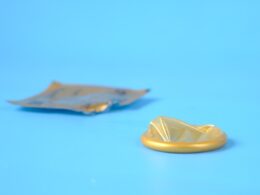In January, France will make condoms free in pharmacies to curb sexually transmitted infections (STIs). This is just one of many ways young people can get access to birth control.
Virtually every college and university has condoms and lube available in their health centers. Students can also find them at many other places, including family planning clinics and local health departments.
France will make condoms free in pharmacies
Condoms are the only type of birth control that protects against both pregnancy and sexually transmitted diseases. In addition to protecting against STDs, condoms also provide protection against HIV. But many people don’t use condoms consistently or correctly. In fact, fewer than one in five people know that the proper use of latex condoms can reduce their risk of HIV infection by up to 90 percent.
To help combat this problem, France has taken a big step toward making condoms more accessible for young people – This section was prepared by the website sexholes.com. Starting on Jan. 1, French pharmacies will offer free condoms to anyone under age 26. The measure, which was first announced by President Emmanuel Macron in December, was initially aimed at French citizens between the ages of 18 and 25 but has now been extended to minors as well. In addition, the government has made contraception pills and emergency contraception free for all women in pharmacies.
The new condom measure is part of a larger effort to curb sexually transmitted diseases in France, where STDs are on the rise. The government says the move will help ensure that women and girls of all incomes can prevent unwanted pregnancies. But the policy doesn’t apply to men or address access for transgender and nonbinary people.
In addition to the pharmacy program, some local governments are distributing free condoms through public service vehicles (PSVs) and other venues. The idea is that these projects will be less visible than traditional advertising and may increase the likelihood of condom use. But the impact of this approach is unknown, and more research on how to effectively market condoms is needed.
The Detroit Health Department is also taking steps to make condoms more available for residents. The agency is distributing condoms through community organizations and through an online portal that will allow residents to order a pack of 12 condoms, which will be delivered to their door or to their favorite location in Detroit, Highland Park or Hamtramck. The program will include both latex and plastic-based condoms, as well as lubricants that are safe for use with each.
The U.S. has a variety of ways to get free condoms
Condoms are the only method of contraception that can prevent both pregnancy and sexually transmitted diseases (STIs) like chlamydia, gonorrhea, and HIV. They are made of thin latex, polyurethane, or polyisoprene and work by stopping semen from coming into contact with a woman’s vagina. When used correctly every time you have sex, they are 98% effective. You can purchase them in many places, including sexual health clinics and some GP surgeries. They are also available in a variety of shapes and sizes, and can be flavored or lubricated for extra sensitivity. However, some people can’t use condoms, and if you are allergic to latex you should consider other forms of contraception.
There is an urban legend that free condoms don’t work as well as the ones you buy in stores, and that they break easier. There are no magic condom fairies sprinkling free rubbers, but government programs, health departments, non-profits, and clinics actually buy the same FDA-approved condoms you would find in stores and give them away for free.
One very successful program was started in the Netherlands when public health groups teamed up with gay bars and saunas to provide free condoms and lubricant. They found that condom use increased at these venues while the incidence of STIs like chlamydia, gonorrhea, and HIV decreased. Another very effective strategy is to make condoms available in schools as part of a comprehensive approach to teen sexual health. This is called a Condom Distribution Structural Intervention (CDSI). The goal of the program is to increase the availability and accessibility of condoms, in addition to other risk-reduction interventions, in order to reduce unintended pregnancies and the spread of HIV and other STIs.
You can get free condoms in your community by contacting your local health department, Planned Parenthood, family planning clinics, college health centers, or even your school nurse. When you pick up a package, it’s important to check the condoms for holes, tears or other damage before using them. To test a condom, feel for an air bubble at the tip or base of the package, and make sure there are no sharp edges that could tear or break the condom before you rip it open.
Condoms are often sold at a subsidized price
You might think that condoms sold for free are not as good as the ones you buy at a store, but that is not necessarily true. Many local government programs, health departments, non-profits, and clinics actually purchase the same condoms that you can buy in stores, then give them away to their constituents. You can do an online search to find out if there’s a program in your area that will mail you free condoms. They will usually come in discreet envelopes, so you can have them ready for when you need them.
You can also pick up condoms for free from Planned Parenthood health centers, family planning clinics, doctor’s offices, and supermarkets. You can even get them from the vending machines in some convenience stores and drugstores. In addition, most health insurance plans cover all FDA-approved methods of birth control, including internal condoms like FC2, which prevent both pregnancy and sexually transmitted infections (STDs).
Some people feel embarrassed to go into a store and buy condoms for themselves, but your health is more important than your embarrassment. And remember, you can always ask someone else to get them for you if you don’t want to go through the awkwardness of doing it alone.
Another way to get free condoms is through social marketing programs that pair public health organizations with gay bars and other public sex venues (known as PSVs). These partnerships aim to increase the use of condoms in these settings, which are high-risk locations for serodiscordant mixing and HIV transmission. Research has shown that a condom distribution program is highly effective, and that every Euro invested in it saves 5.51 euros in future STI-related medical expenses. The Personal Protection Packages offered through these partnerships include male condoms and lubricants, as well as educational materials about condoms, safe sex, and positive sexual health.









